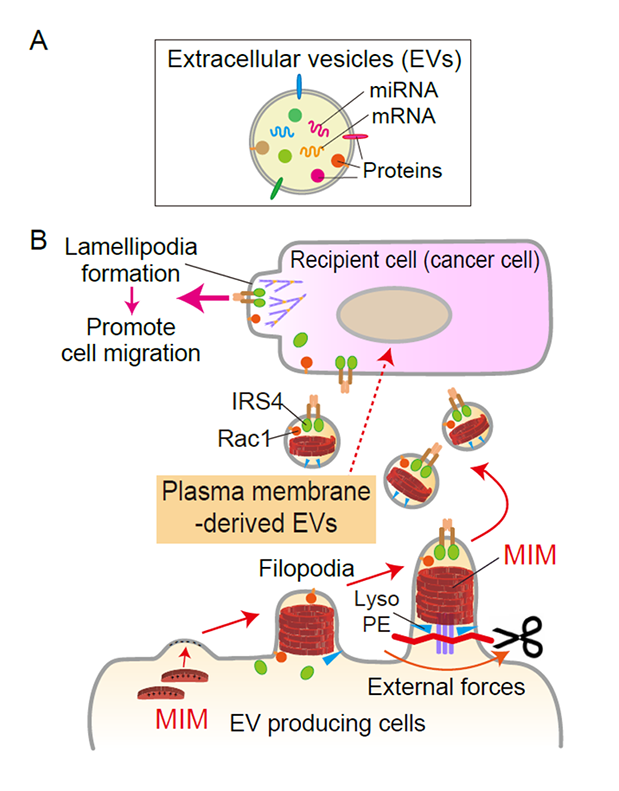2022.12.01
Secretion mechanisms and physiological roles of the novel extracellular vesicles from cell protrusions
Molecular Medicine and Cell Biology ・ Assistant Professor ・ Tamako Nishimura
Extracellular vesicles (EVs) are lipid vesicles secreted from most of the cells and deliver various proteins and nucleic acids to recipient cells. EVs thus transmit intercellular signals and cause various diseases, including cancer and neurodegenerative disease (Fig. 1A). EVs are largely classified into two subclasses, which are endosome-derived EVs and plasma membrane-derived EVs. Compared with the endosome-derived EVs, which have been extensively studied, the secretion mechanisms and physiological roles of the plasma membrane-derived EVs have been less elucidated.
We recently found that MIM, one of the Bin-Amphiphysin-Rvs (BAR) family proteins that deform membranes into tubules, generates the plasma membrane protrusions that can be shed to secrete plasma membrane-derived EVs1, 2)(Fig. 1B). MIM-induced EV formation was promoted by the external forces and by the existence of lysophospholipids. Moreover, MIM-induced EVs enhanced the migration of some cancer cells.
These results suggest that MIM produces EVs from plasma membrane protrusions. The MIM-induced EVs promote the migration of the recipient cells, possibly enhancing metastasis.
References
Tamako Nishimura NAIST Edge BIO, e0007. (2022).

